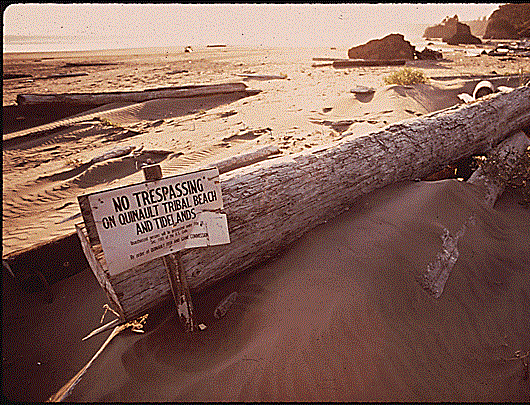Paul C. Rosier's
"'Modern America Desperately Needs to Listen': The Emerging Indian in an Age of Environmental Crisis" appears in the December issue of the
Journal of American History. The article
examines American Indians’ perspectives on the “environmental crisis” that shook American society in the 1960s and 1970s. Indian activists, politicians, and intellectuals promoted ecological issues tied to political and legal questions of sovereignty commonly associated with Indians’ “red power” movement, while collaborating with non-Indians on environmental problems to find political support and common ground. His essay addresses the neglect of American Indians in coverage of the 1960s and modern environmental activism and underscores the relationship between political sovereignty and environment, the interplay of symbolic space and real place, and the roots and range of the environmental justice movement. He also offers an example of how Indians’ ideas and actions can be integrated into the broader narratives of modern American history.
There is a prominent legal dimension to the story, as Indians made legal claims based, among other things, on land ownership and treaty rights. Rosier describes an early example:
 |
EPA, Closed Area of Quinault Tribal Beach (1972)
NARA |
The federal government's building of the Kinzua Dam (1960–1965) resulted in the forced removal of roughly seven hundred Senecas in northwestern Pennsylvania and southwestern New York, and the New York State Power Authority (SPA) took 550 valuable acres from the Tuscarora's small reservation. This diminution of land, cultural assets, and treaty rights reinforced for native activists across the country the central role their environment played in maintaining Indian identity and sovereignty and generated a new vocabulary and model of protest for contesting the dominant society's use of progress narratives to advance its interests.
In the Tuscarora case, the SPA used eminent domain to claim part of the Tuscarora's land base for the Tuscarora Reservoir, a component of a massive Niagara Falls hydroelectric project. In response, Tuscarora activists blocked with their cars and their bodies SPA surveyors' access to what the Indian group considered sovereign space. In one of the most dramatic confrontations of post–World War II Indian-white relations—and of early environmental justice activism—two hundred Tuscarora faced off against New York State troopers and sheriffs who were armed with submachine guns and tear gas. Different conceptions of land use and value lay at the heart of conflicts in Indian country. Resuscitating colonial Americans' justification for taking Indian land, the SPA chairman Robert Moses, the chief architect of postwar urban renewal, claimed that most of the Tuscarora land was “not used for any purpose at all.” The Tuscarora leader Clinton Rickard retorted that Moses “had spent his career dumping concrete over the landscape” and thus could not “see how people could be using land unless they did likewise.” In 1960 the U.S. Supreme Court affirmed the right of New York State to take Tuscarora land by eminent domain despite national treaties [New York State Power Authority v. Tuscarora Indian Nation, 80 S.Ct. 543 (1960)]. But in his dissent Associate Justice Hugo Black gave voice to the Tuscarora's critique of the material foundations of modern progress: “It may be hard for us to understand why these Indians cling so tenaciously to their lands and traditional way of life. … But this is their home—their ancestral home. There, they, their children and their forebears were born. Some things are worth more than money and the costs of a new enterprise.” Black ended with a sentiment that native activists, young and old, would cite again and again: “Great nations, like great men, should keep their word.”

No comments:
Post a Comment